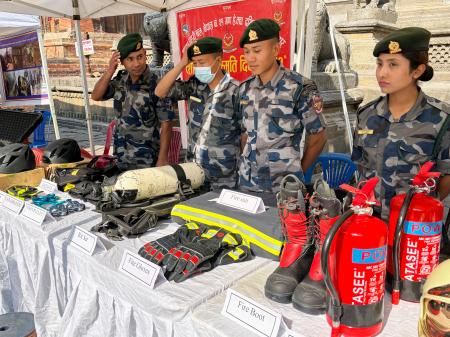Nepal's Earthquake: Rebuilding Safer Communities – A Decade of Progress and Ongoing Challenges
A decade after the devastating 2015 earthquake, Nepal continues its journey towards rebuilding safer and more resilient communities. This article explores the progress made, the challenges that remain, and the crucial role of sustainable building practices in securing Nepal's future.
The Scars Remain: Remembering the 2015 Earthquake
The 7.8 magnitude earthquake that struck Nepal on April 25, 2015, left an indelible mark on the nation. Thousands lost their lives, and countless more were displaced. The UNESCO World Heritage sites of Kathmandu Valley suffered immense damage, highlighting the vulnerability of Nepal's infrastructure and building practices. The disaster underscored the urgent need for seismic-resistant construction and community preparedness. The aftermath wasn't just about bricks and mortar; it was about rebuilding lives, livelihoods, and hope.
Key Impacts of the 2015 Earthquake:
- Massive Loss of Life: The earthquake claimed thousands of lives, leaving families devastated.
- Widespread Destruction: Homes, schools, hospitals, and cultural heritage sites were reduced to rubble.
- Displacement and Migration: Many were forced to leave their homes and seek refuge elsewhere.
- Economic Disruption: The earthquake severely impacted Nepal's economy, hindering development efforts.
Rebuilding Nepal: Progress and Innovation
The international community rallied to support Nepal's reconstruction efforts. Billions of dollars in aid poured in, funding rebuilding projects across the country. This support enabled significant progress in several key areas:
- Improved Building Codes: New building codes incorporating seismic-resistant design principles have been implemented, aiming to make future structures more resilient.
- Reconstruction of Housing: Hundreds of thousands of homes have been rebuilt or retrofitted, incorporating earthquake-resistant techniques.
- Strengthening Infrastructure: Efforts are underway to improve the resilience of roads, bridges, and other vital infrastructure.
- Community Engagement: Local communities have been actively involved in the rebuilding process, ensuring projects are tailored to their specific needs.
Challenges in the Rebuilding Process:
- Funding Gaps: Despite significant aid, funding gaps remain, hindering the completion of reconstruction projects.
- Slow Implementation: Bureaucratic hurdles and logistical challenges have slowed down the pace of reconstruction.
- Capacity Building: Developing the necessary technical expertise and skilled workforce remains a challenge.
- Enforcement of Building Codes: Ensuring adherence to new building codes is crucial but requires ongoing monitoring and enforcement.
Building a Safer Future: Sustainable Practices and Community Resilience
The rebuilding of Nepal requires a long-term commitment to sustainable building practices and community resilience. This involves:
- Promoting Earthquake-Resistant Construction: Wide-scale adoption of earthquake-resistant construction techniques is crucial to protect lives and property. This includes using appropriate materials and employing skilled labor.
- Investing in Early Warning Systems: Investing in early warning systems can provide crucial time for evacuation and mitigation efforts.
- Community-Based Disaster Risk Reduction: Empowering communities with knowledge and skills to prepare for and respond to future disasters is vital. This includes conducting regular disaster drills and promoting awareness.
- Sustainable Material Sourcing: Using locally sourced, sustainable materials reduces the environmental impact of reconstruction and supports local economies.
Conclusion: A Path Forward
Nepal's journey towards rebuilding safer communities is a testament to the resilience of its people and the commitment of the international community. While significant progress has been made, challenges remain. By continuing to invest in sustainable building practices, strengthening community resilience, and ensuring effective implementation of building codes, Nepal can build a more secure and prosperous future, minimizing the impact of future disasters. For further information on earthquake preparedness and reconstruction efforts, explore resources from organizations like the and .
